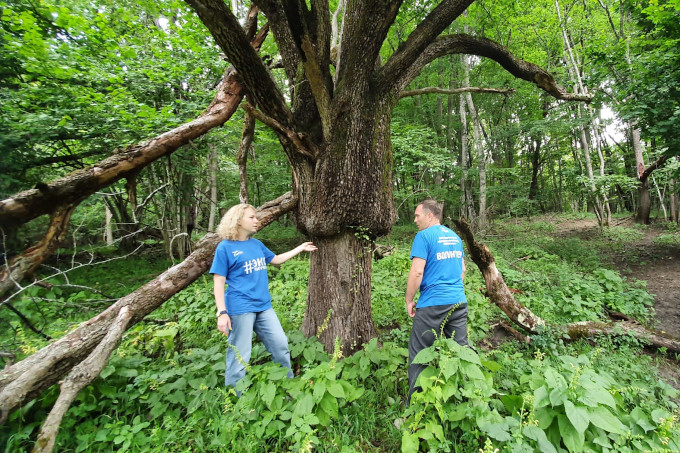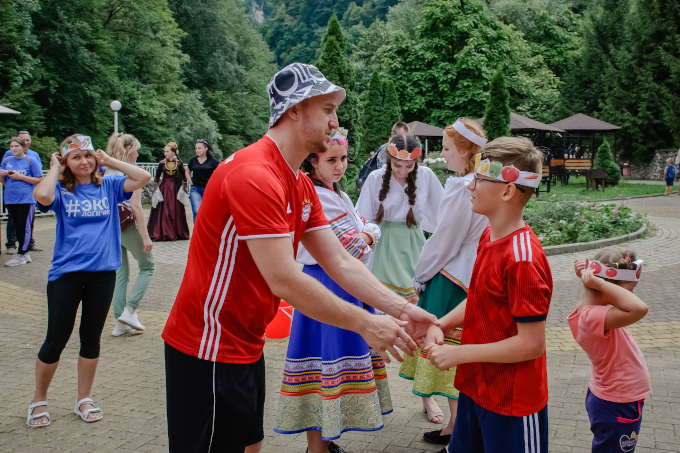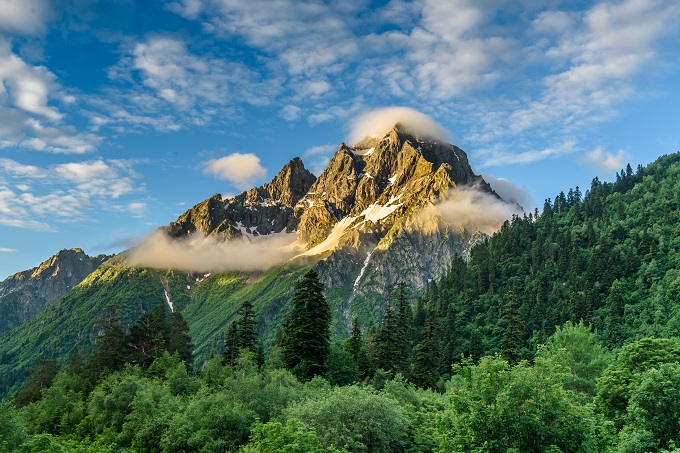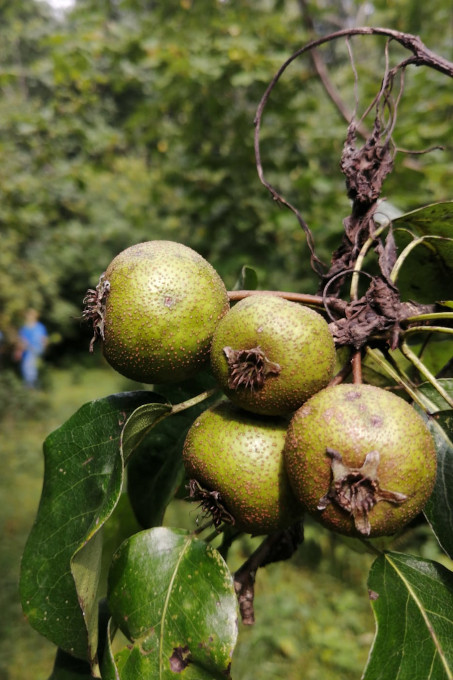Circassian Orchards
Cultural heritage and precious habitat

Cultural asset and habitat at the same time: the old giant fruit trees of the Circassian orchards. - photo: NABU-Kavkaz
The last remains of a unique form of landscape can still be found in the North Caucasus: the Circassian orchards. These ancient cultural landscapes can be found in the wooded foothills of the Republic of Adygea in the Russian part of the Caucasus. They are the result of a traditional form of land use practised by the Circassians – the population that originally lived in this region.
What makes the Circassian orchards so special? Grafting is used to combine cultivated fruit varieties with their wild relatives. This produces unique and particularly robust varieties, which are perfectly adapted to the local climate conditions. Thanks to this folk tradition, the landscapes of the Circassian settlements developed into fruitful forest gardens. When the Circassians were driven out of their homeland in the 19th century, however, knowledge about traditional fruit growing was largely lost. The remaining relics of the orchards are about 150 years old, and most are severely overgrown.
Extensive cultural landscapes such as the Circassian orchards are valuable habitats. Traditional fruit growing does not use chemical fertilizers and pesticides, so the old fruit trees offer a home to a multitude of insects, birds and mammals. At the same time, they constitute an important link between nature conservation and local culture: preserving traditional practices can help to strengthen people’s identification with their local natural environment, and motivate them to protect the natural resources in their own backyard. Therefore, NABU completed a project aiming to preserve the remaining orchards and promote the revival of the Circassian fruit-growing tradition.
In the project “Orchards: Cultural Heritage of the Caucasus”, NABU supported voluntary groups who are working to preserve the orchards. We facilitatde training and knowledge sharing with voluntary conservation groups in Germany, and carried out measures to revive this ancient form of horticulture, such as fruit-growing workshops and planting sessions. Two cultural events, in Adygea and Berlin, were also part of the project, along with a number of village festivals. The events combined the preservation of local traditions with an appreciation of the natural environment.

At village festivals, visitors from the region can find out about the value of the Circassian orchards. - photo: NABU-Kavkaz
Project title
Orchards: Cultural Heritage of the Caucasus
Country/Region
Republic of Adygea, North Caucasus, Russia
Period
May 2021 to December 2021
Partners
NABU-Kavkaz and ECOland
Sponsored by / Supported by
German Foreign Office as part of the programme “Expanding Cooperation with Civil Society in the Eastern Partnership Countries and Russia”
Focus Regions Overview
All over the world biodiversity is at risk, and with it people's quality of life. Nature conservation must transcend borders. Together with international partners, NABU is active in these regions: Europe, Africa, Central Asia, South East Asia and the Caucasus. more →




